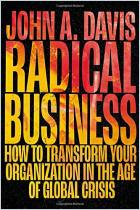Únase a getAbstract para acceder al resumen.

Únase a getAbstract para acceder al resumen.
Holly A. Duckworth and Andrea Hoffmeier
A Six Sigma Approach to Sustainability
Continual Improvement for Social Responsibility
CRC Press, 2016
¿De qué se trata?
Six Sigma experts show how being socially responsible can keep a firm thriving for – no joke – 1,500 years.
Recommendation
Six Sigma experts Holly A. Duckworth and Andrea Hoffmeier outline a continual-improvement program for long-term sustainability. Their model is Japan’s 1,500-year-old firm, Kongo Gumi, founded in 578 AD. They report that most current continual improvement programs can address social responsibility with a few small changes and little complexity. The authors apply the Six Sigma method to transparency, fair labor practices, community involvement and environmental impact. Their dry writing style and jargon don’t undermine the value to managers of their many actionable ideas.
Summary
About the Authors
Holly A. Duckworth is a Six Sigma Master Black Belt and volunteer leader for the American Society for Quality. Andrea Hoffmeier is a Six Sigma Black Belt who focuses on marketing, product development, quality management and organizational excellence.





















Comment on this summary